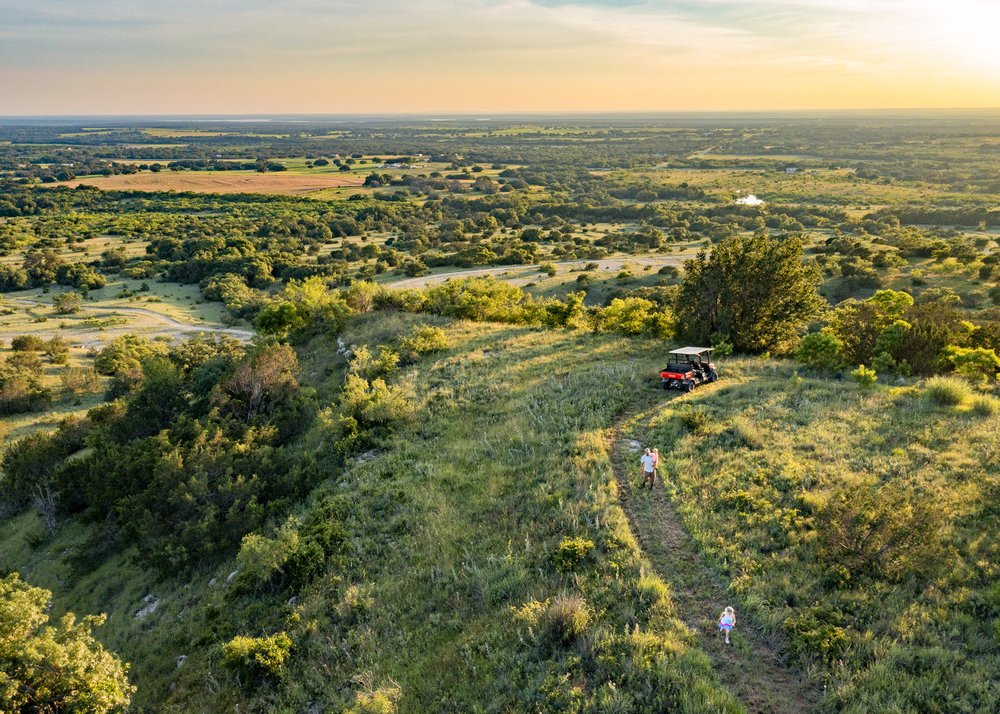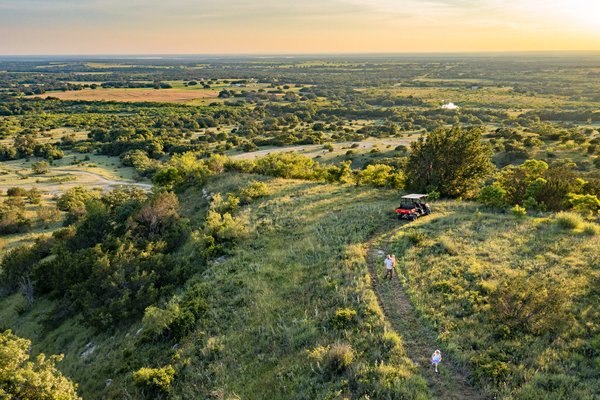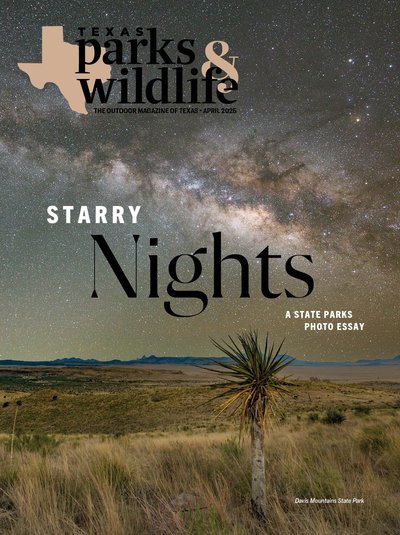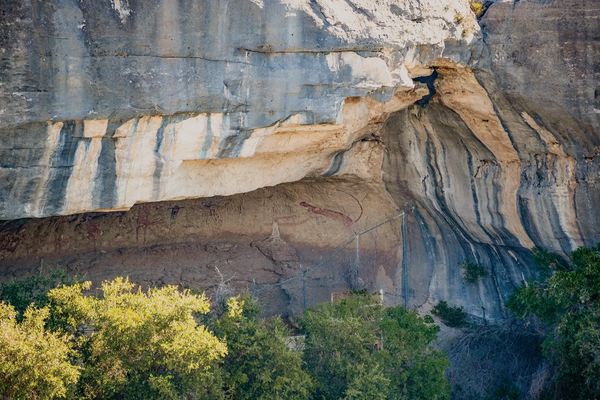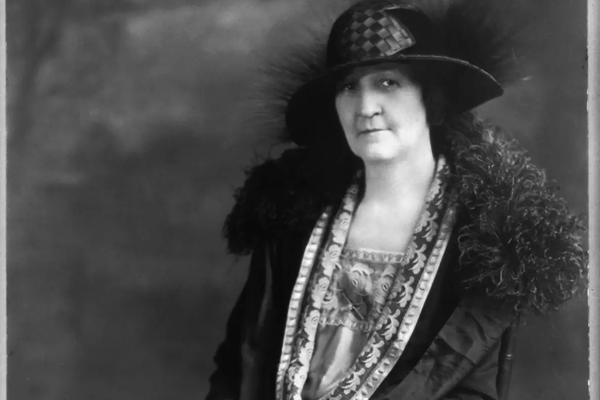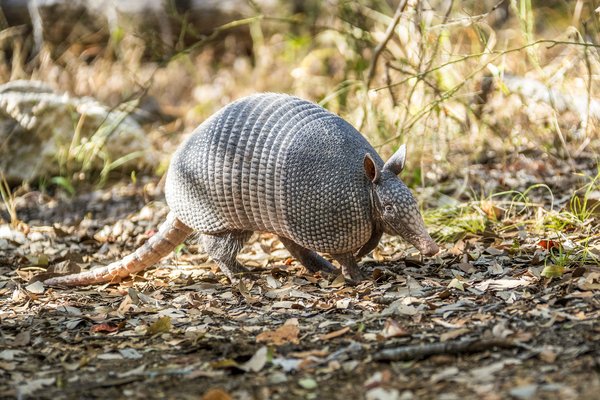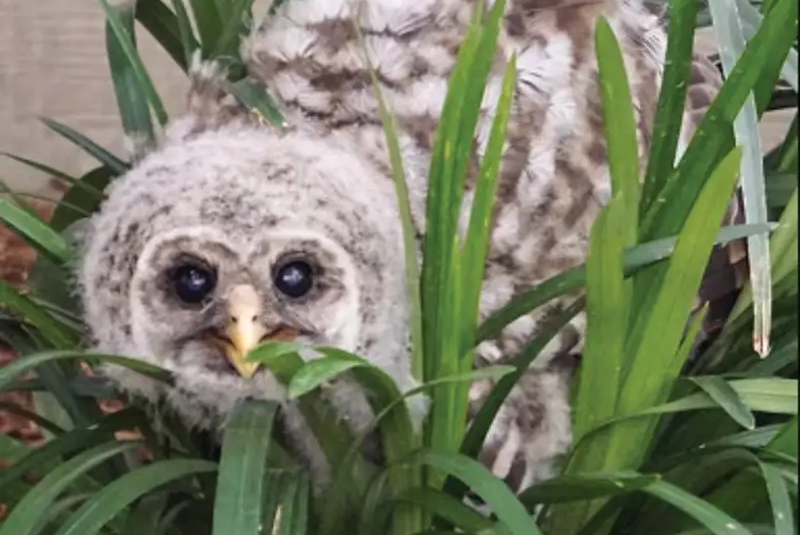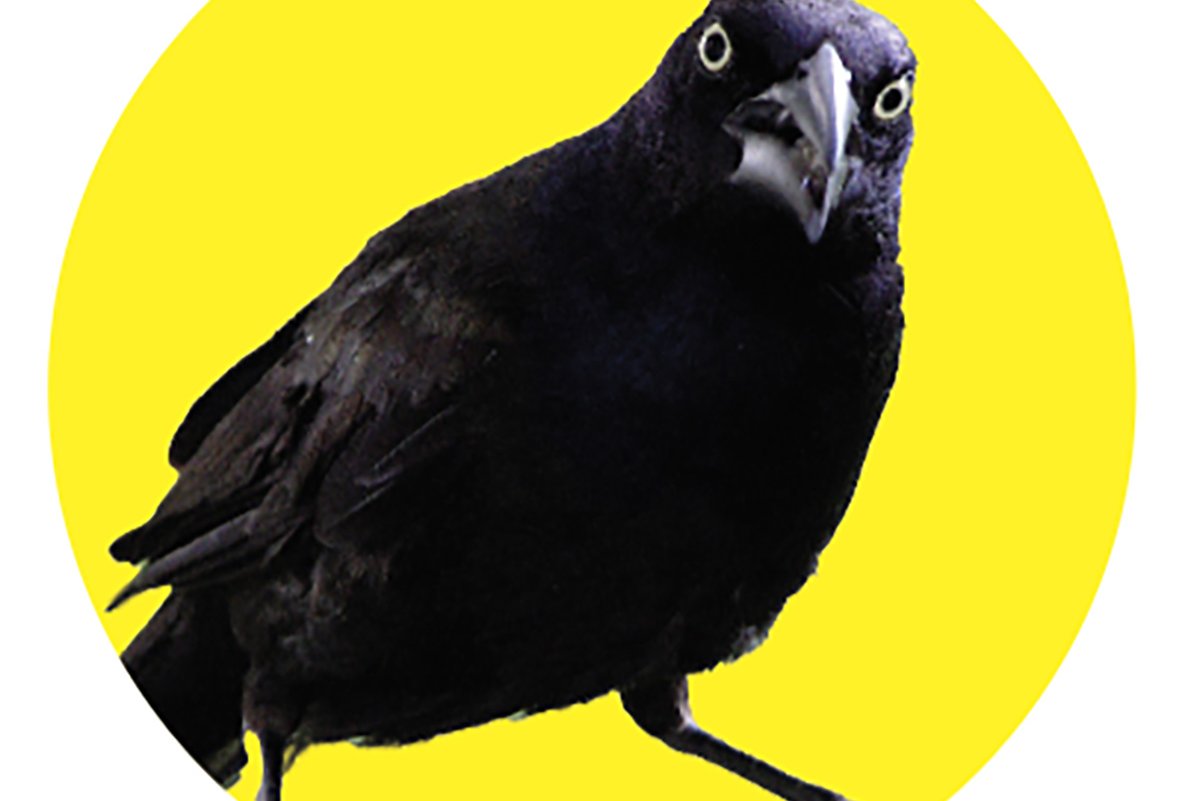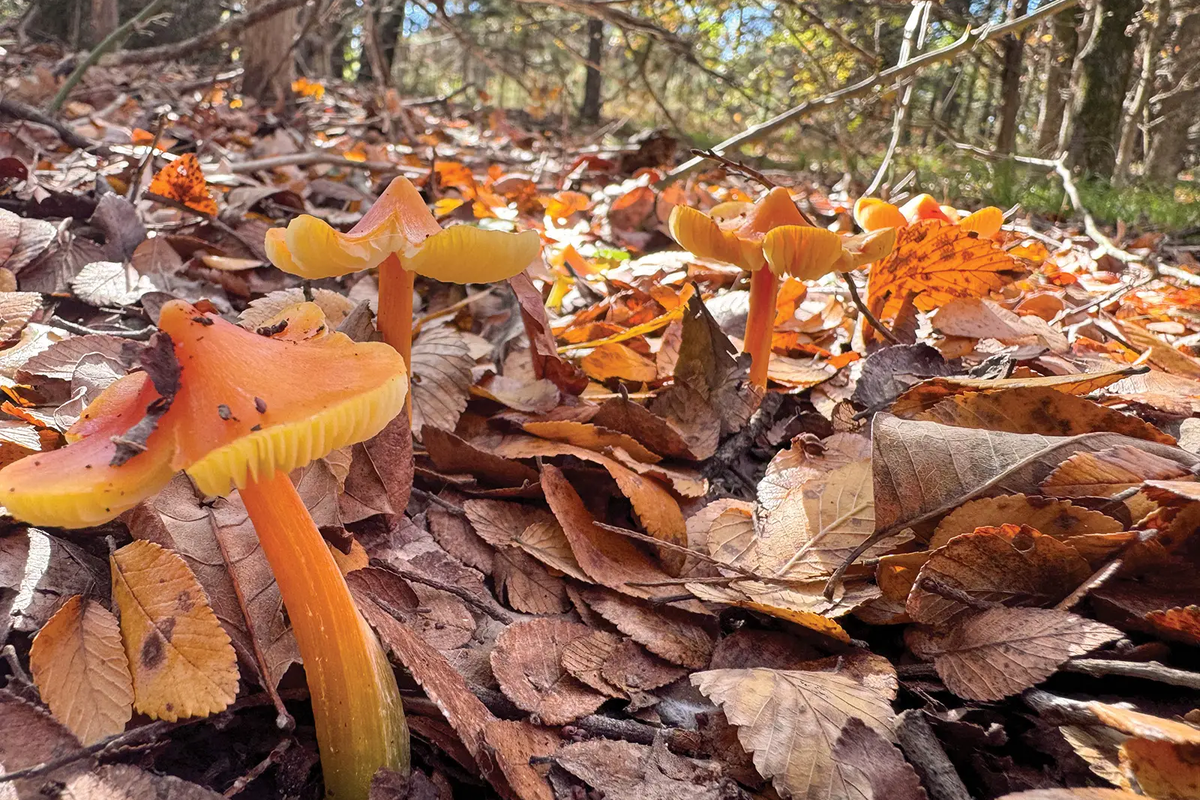This is the tale of the acquisition of a new wildlife management area for Texas that will forever protect precious wildlife habitat for the wild things that call it home.
It is a story grounded in a shared love for the land, and the people motivated to conserve it. The people in this story are the landowner, who along with his wife made the decision to entrust his family's land legacy to the Texas Parks and Wildlife Department (TPWD), the TPWD wildlife biologist who met the landowner in 2009, and the veteran land conservation professional who pulled it together with a real estate transaction in 2023 - a collaboration that culminated in what is now known as the Paul and Toni Fox Burns Wildlife Management Area (WMA).
The new WMA contains 2,178 acres near Brownwood. Adjacent to the Muse WMA, the Paul and Toni Fox Burns Wildlife Management Area is now part of TPWD's Cross Timbers and Prairies Ecosystem Management Project. Thanks to decades of careful stewardship, the land is in beautiful shape, with flowing springs that support a diversity of species from pollinators to white-tailed deer. In 2012, the ranch was awarded TPWD's prestigious Lone Star Land Steward Award.
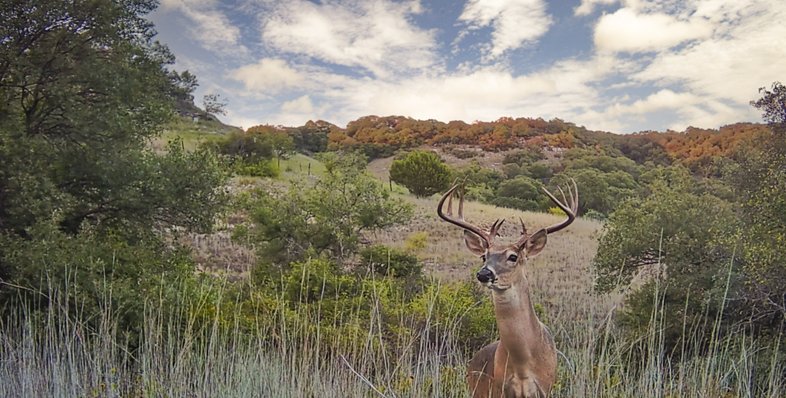
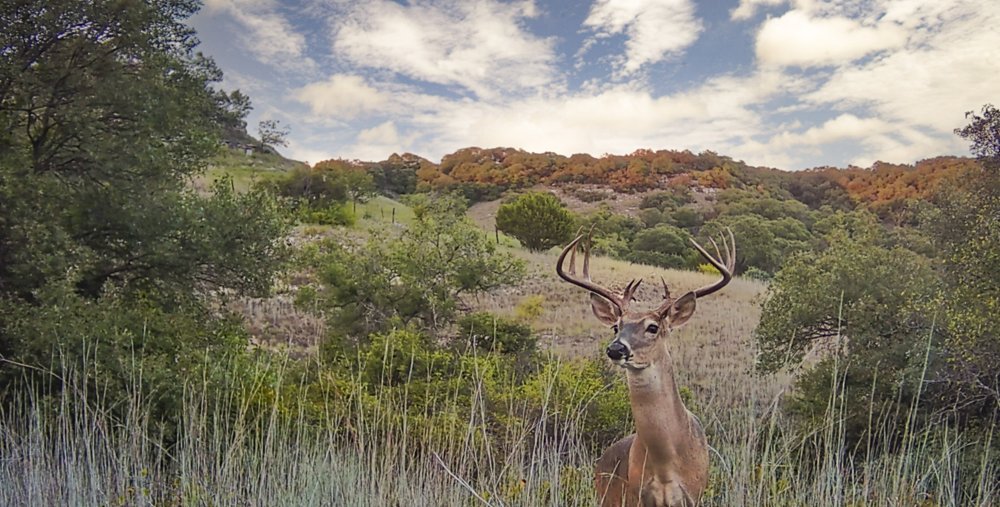
White-tailed deer at the ranch.
White-tailed deer at the ranch.
Buying a Ranch
In the 1870s, Paul Burns' family came to the area to stake out a life on Texas' rugged frontier.
Burns' great-grandfather, Simon Pierce Burns, was a colonel during the Civil War and purchased the original tract of land that formed the ranch in 1873. The Burns family had good times and bad, as all ranchers do. The heyday for the ranch was the first two decades of the 20th century when the family presided over a sprawling cattle-raising operation. Then, like the experience of thousands of other families, the Great Depression hit hard, and the family lost many of its ranch holdings.
Paul Burns was born in Brownwood in 1938, and he knew from a very early age that he wanted to be a doctor. His published memoir, Born to be a Doctor, details what, by all accounts, is an extraordinary life. He grew up working hard on the ranch and at his studies. He excelled at the University of Texas and studied medicine at Baylor College of Medicine. He joined the Army and did a tour of duty in Vietnam. He then launched an ear, nose and throat medical practice in Austin, which thrived for decades. His patients included opera singers, a governor and the family of a president, but he never turned anyone away, treating those without the ability to pay the same as any other.
His successful practice, coupled with a relatively modest lifestyle, provided the means for him to indulge in his passions, from collecting art, maps and historical documents to nurturing the then-fledgling Austin Lyric Opera by serving on its board for many years. He also made regular visits to the ranch with his family during this busy time in life.
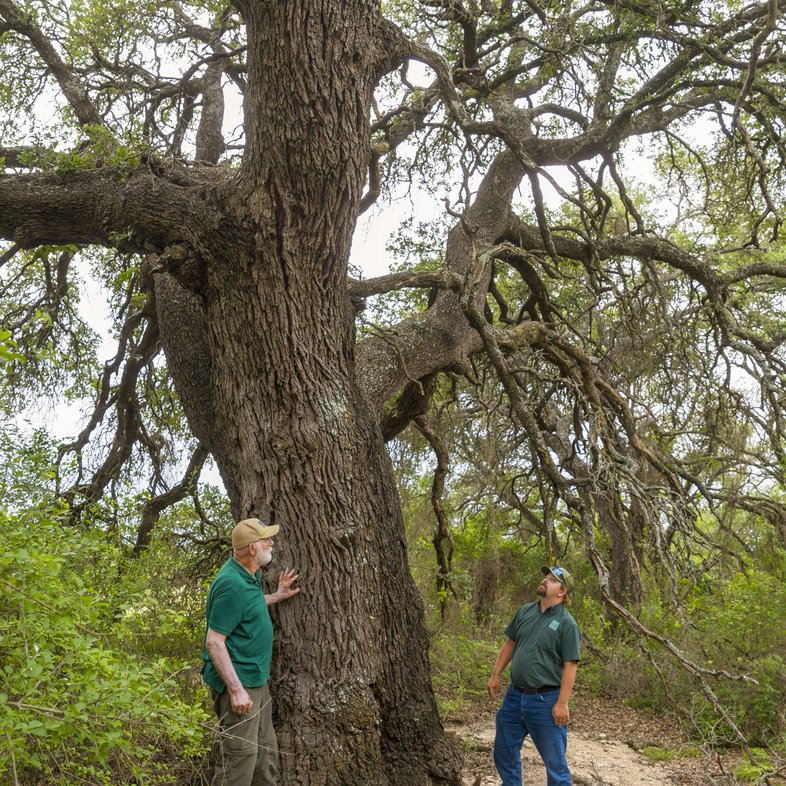
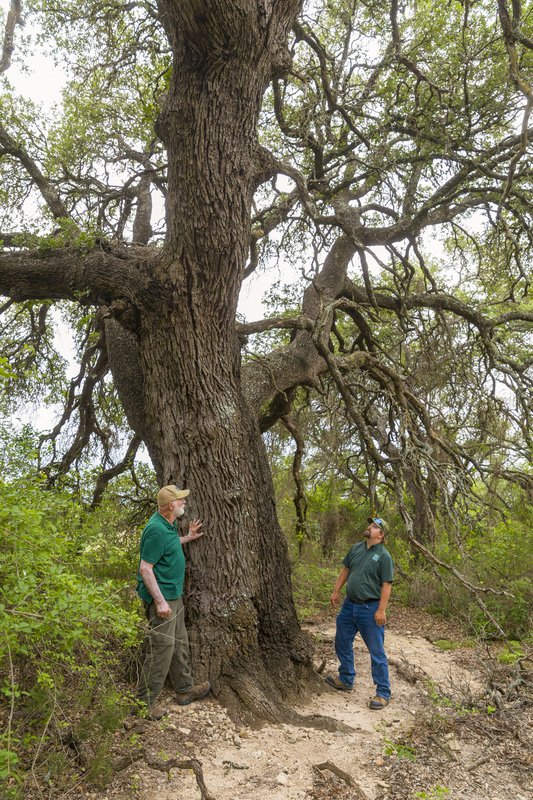
Land restoration is a team effort involving several TPWD employees.
Land restoration is a team effort involving several TPWD employees.
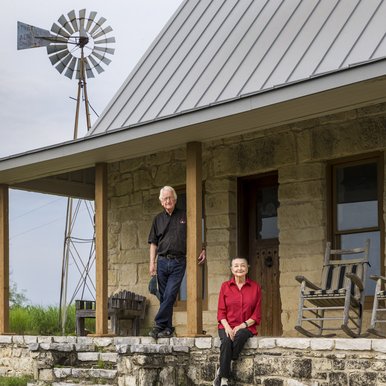
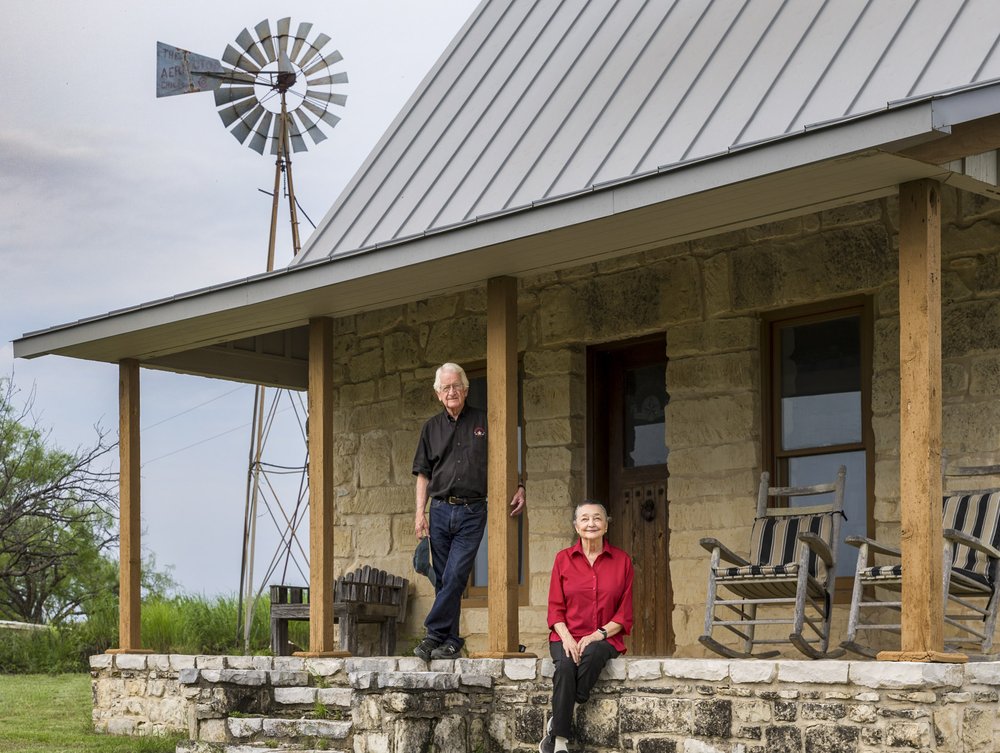
Paul and Toni Fox Burns have spent decades restoring the ranch.
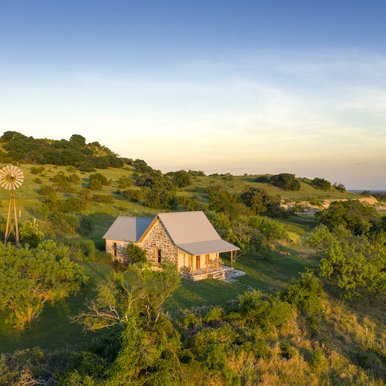
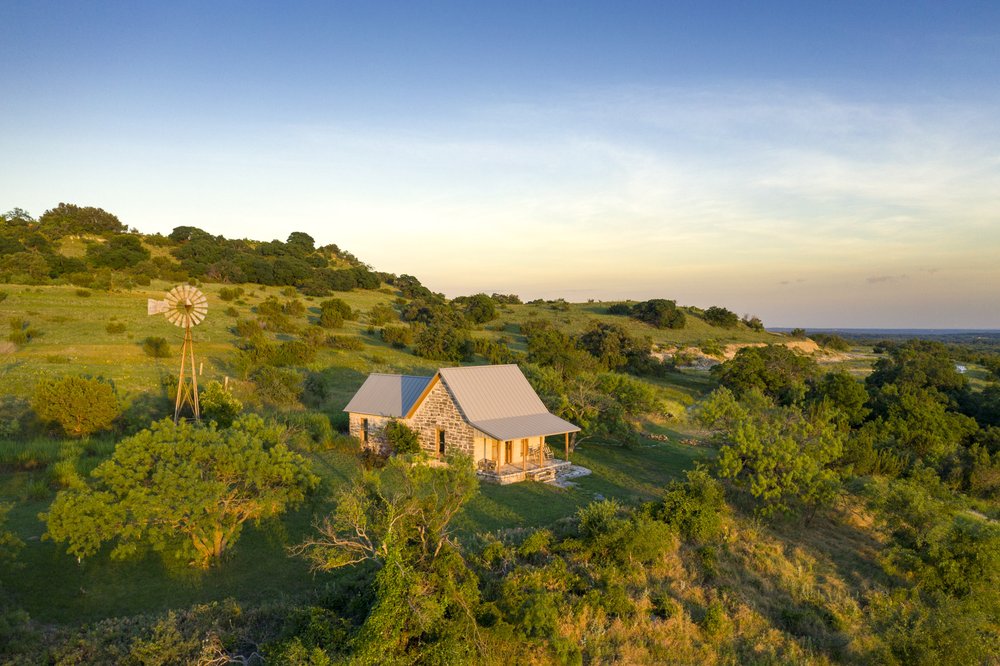
Paul and Toni Fox Burns have spent decades restoring the ranch.
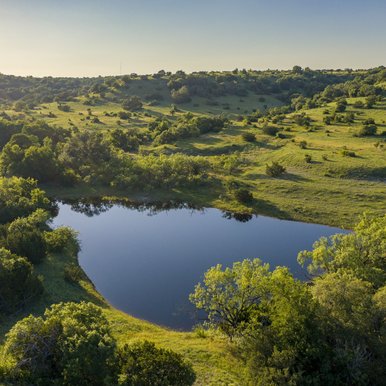
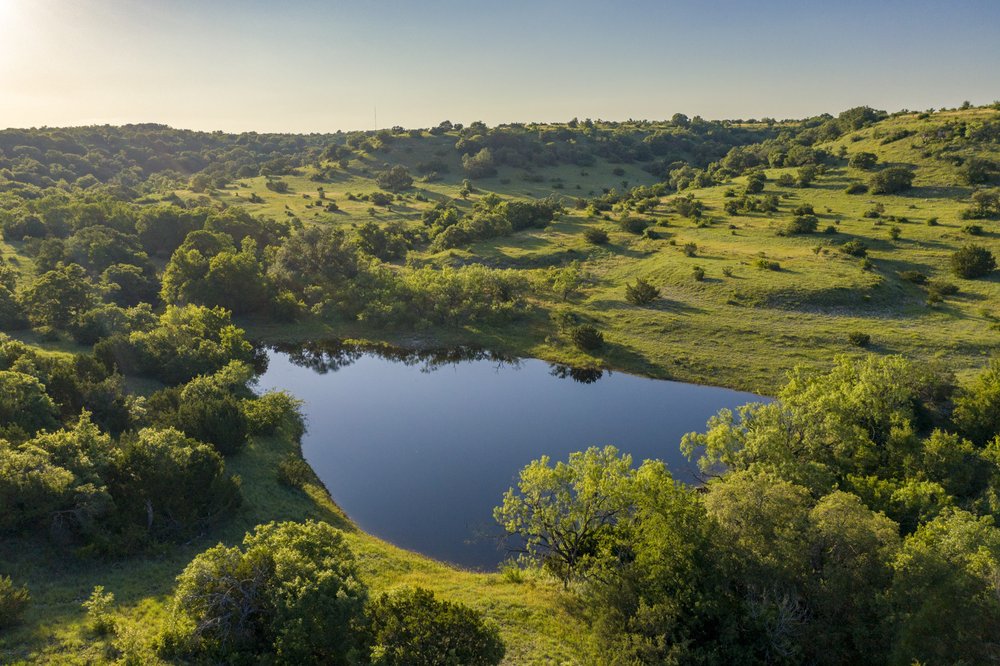
Paul and Toni Fox Burns have spent decades restoring the ranch.
Paul and Toni Fox Burns have spent decades restoring the ranch.
Protecting the Ranch
In the mid-1970s, Burns and his siblings made the decision to try to recoup the original family ranch holdings. Section by section, as land came on the market, they pieced together the ranch their great-grandfather founded, eventually amassing about 6,000 acres that would come to be known as the Colonel Burns Ranch.
The reacquired land was in sad shape. Overgrazed for decades, there was not a single sprig left of the tall native prairie that had once flourished. Roads were washed out, massive soil erosion had occurred, and all the native game species had been overhunted and were largely gone. Only one of the many historic springs still ran.
During this same timeframe, one of Burns' patients, the CEO of a major corporation who had lived around the world, shared an observation. The life paths of Burns' daughters had taken them far away from Texas, and the patient advised Burns that the best thing he could do to support his family was to provide them with a place they could always call home. This resonated deeply with Burns. Inspired, Burns and his wife began their journey in earnest to restore the land back to health.
“Naively, I thought it would be fairly easy to restore the ranch to its original condition,” says Burns. “That was the beginning of a 40-year ecological education.”
After about a decade of feeling like he was not making much progress, Burns hit pause.
“I decided to stop everything I was doing and just study the ranch, study the wildlife and learn everything I possibly could,” he says.
Over the course of several years, Burns attended more than a hundred conferences and seminars. He took courses at Texas A&M. He visited every successfully managed ranch he could. He consulted with TPWD, the Natural Resources Conservation Service and Texas AgriLife. He read every original journal and historical document that detailed what the land looked like before early settlers arrived in Texas.
Then he got to work.
There were hundreds of acres of brush that needed to be removed, and Burns was meticulous about how that was done. He followed in the tracks of the bulldozer, directing the operator on which trees to take out, and then he personally hand-seeded native prairie grasses in the dozer's wake. He fenced off sensitive springs to protect them from cattle. And then there was perpetual maintenance to prevent regrowth of invasive mesquite and cedar.
A real turning point happened in 1995 with the passage of the law that allowed landowners to use wildlife management as a qualifying tax evaluation.
“That allowed us to remove all the cattle and focus exclusively on restoration,” Burns says. “Our focus has always been on the entire ecosystem, and we have a motto here that bees, butterflies and red ants are just as important as deer.”
In 1996, he retired from his medical practice, and he turned his attention full-time to the ranch. For decades, Burns continued restoration efforts, a never-ending and expensive pursuit that slowly but surely began to show results as the land healed.
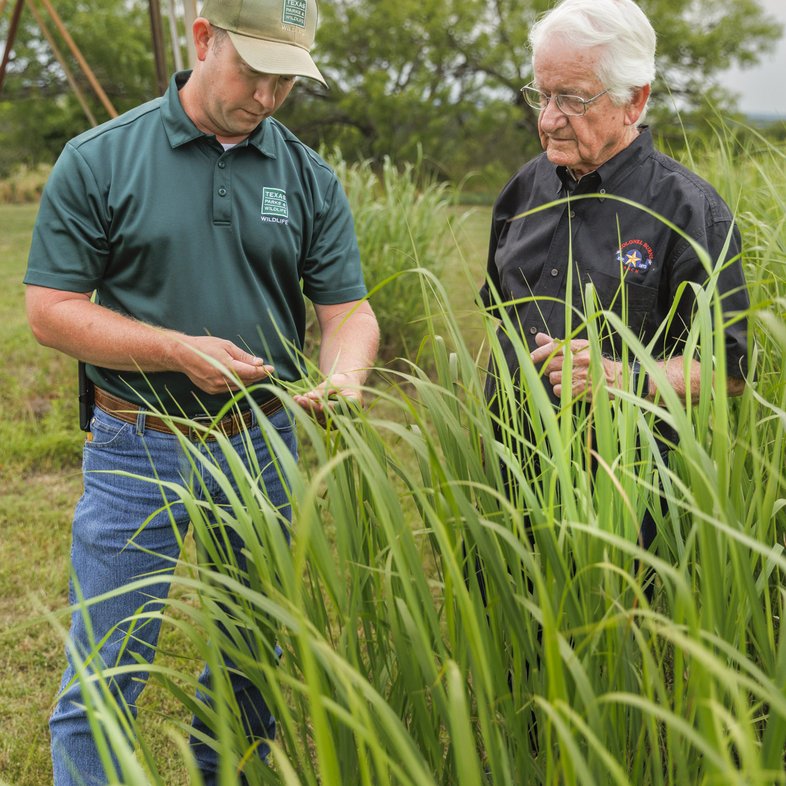
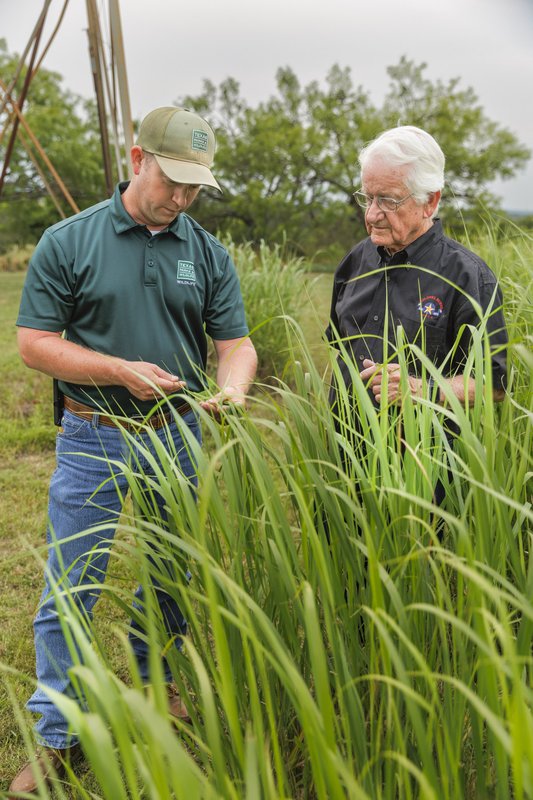
TPWD's Devin Erxleben and Paul Burns worked together on the restoration.
TPWD's Devin Erxleben and Paul Burns worked together on the restoration.
In 2009, Burns met a wildlife biologist who was just getting started on his career. How that young biologist interacted with Burns is the second storyline of this conservation tale.
Devin Erxleben was hired at the nearby Muse WMA a few weeks after he graduated with his master's degree in wildlife management from Texas Tech. Shortly after, Paul Burns stopped by to introduce himself and invited Erxleben to visit the ranch.
That was the beginning of both a professional relationship and friendship.
“It's a joy to work with Devin,” Burns says. “I have met few people in my day who are as knowledgeable about their profession. He is a tremendous resource for me and other landowners who are trying to do right by the land.”
For Erxleben, Burns has been a mentor as well as friend. “I constantly remind myself that Dr. Burns has decades of experience doing this,” says the biologist. “I have some book smarts and have been in the field now for more than 15 years, but any time I have the privilege of spending time with him, I know I will learn something.” The two men bonded over their shared interest in land stewardship, and for many years, they would see each other at least once a month, either at the Muse or at the Colonel Burns Ranch.
Paul and Toni Burns attended just about every landowner workshop Erxleben organized, and they financially supported habitat work, outreach and wildlife research at the Muse. They also opened their gates for field days for other landowners.
In 2022, the Burns family began discussing their succession plans. What would happen to the ranch in the future? How could they ensure the land would be protected and cared for after they were gone?
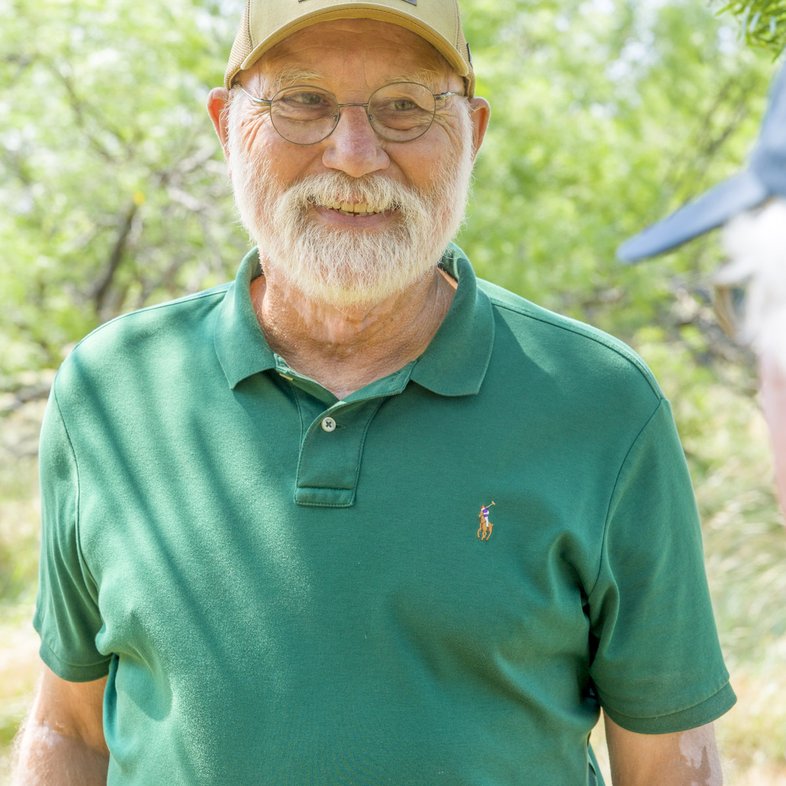
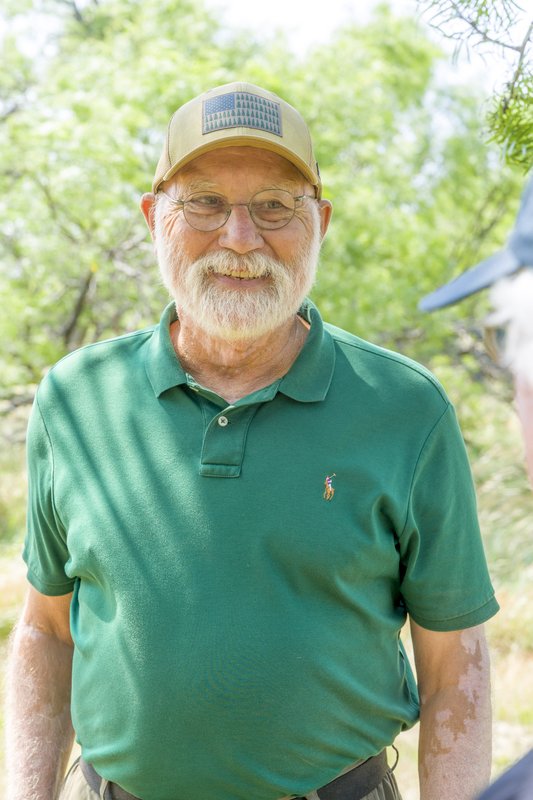
Corky Kuhlmann helped facilitate the sale.
Corky Kuhlmann helped facilitate the sale.
Enter another character in this conservation narrative: Corky Kuhlmann.
Kuhlmann spent 36 years on TPWD's land conservation team and has been involved in some of the most iconic land acquisitions in TPWD history. He's walked countless acres of Texas in pursuit of the properties that make the grade for a potential state park, WMA or state fish hatchery. He's known and trusted by landowners across the state.
Kuhlmann retired from TPWD in 2016 and almost immediately joined Texas Parks and Wildlife Foundation (TPWF) as its land conservation manager. TPWF is the nonprofit partner of TPWD, raising funds for conservation initiatives and providing resources and expertise to TPWD in a variety of ways.
Kuhlmann has longstanding relationships with TPWD staff, including Dale Prochaska, regional director for the Wildlife Division and Erxleben's boss. When Prochaska asked Kuhlmann to join him for a conversation with Burns about the future of his land, Kuhlmann recognized the name - he had met Burns many years prior - and was enthusiastic about the prospect of helping him find a conservation solution.
The first conversation with Burns could not have gone any better.
“The timing was simply perfect,” Kuhlmann says. “The Burns family was looking for a way to permanently protect their land, and TPWD was looking to purchase land for a WMA in this part of Texas. There were Pittman-Robertson funds available for the purchase, and we just had to figure out the details.”
The Pittman-Robertson Wildlife Restoration Act provides federal funds for the purchase of wildlife habitat, with the caveat that a 25 percent match is made by the state or through private dollars. The ranch was appraised at close to $10 million. Burns agreed to a bargain sale and generously donated 25 percent of the appraised value to provide the match. The deal closed in late 2023, the same year that marked the 150th anniversary of the ranch's founding.
“I couldn't believe how it all came together,” Burns says. “The ranch is permanently protected, and we couldn't ask for better stewards into the future than Texas Parks and Wildlife Department.”
As the lead for the Cross Timbers and Prairies Ecosystem Management Project, Erxleben is now responsible for stewarding the land he has admired for so many years.
The sale provided a financial return for the Burns family, and they also retained a 100-acre portion of the ranch for their family home and an original 1898 homestead that Burns has lovingly restored.
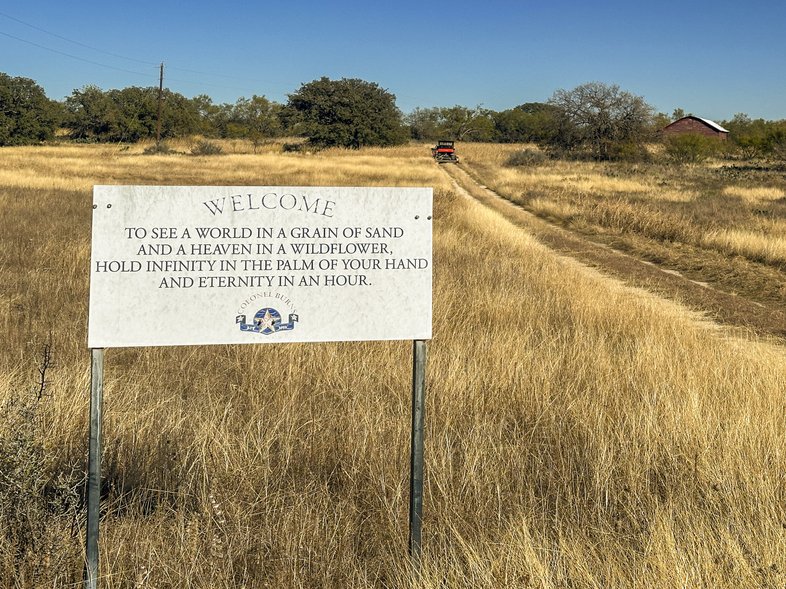
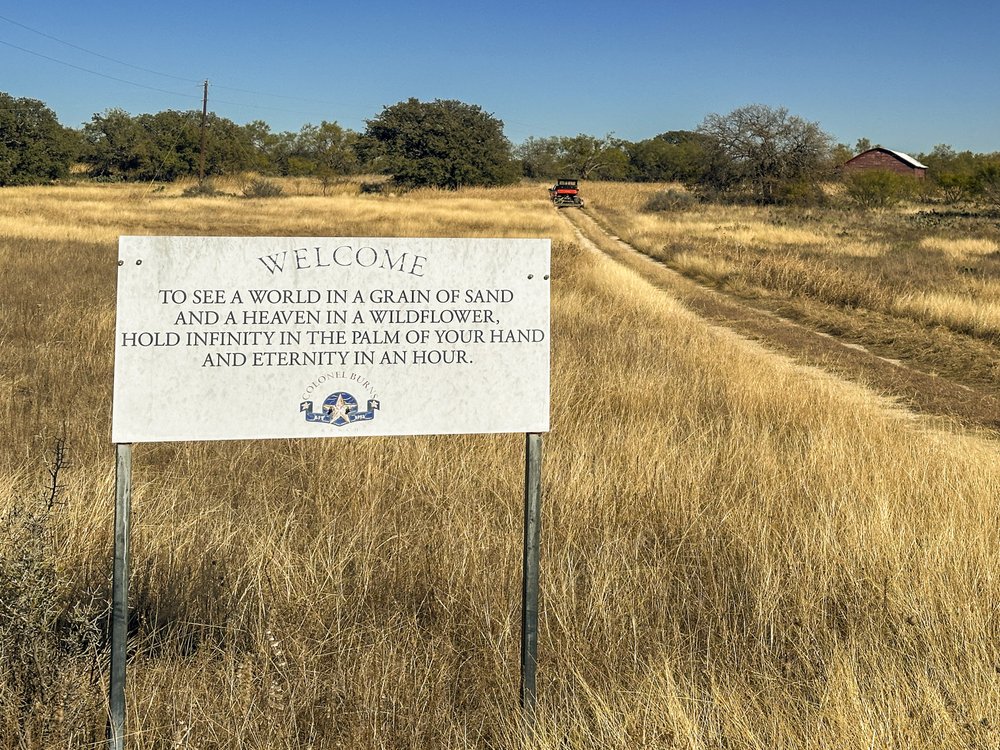
A William Blake quote greets visitors to the wildlife management area.
A William Blake quote greets visitors to the wildlife management area.
A year after the remarkable deal closed, the Burns family made yet another generous donation by establishing a $1 million endowment fund. The fund, which will be administered by TPWF, will provide ongoing support for the new WMA, a fitting epilogue to this tale.
“Paul and Toni Burns have dedicated much of their lives to restoring their ranch, honoring their family history, and using the land to spread conservation awareness and outreach,” Erxleben says. “The generous endowment they've provided will ensure stewardship of this land for generations to come.”
